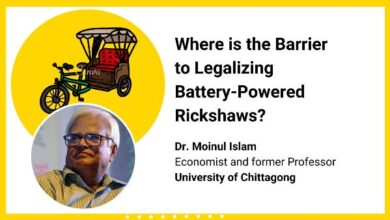Drowning Prevention Day: A Neglected National Crisis in Bangladesh
Despite being a leading cause of death among children and adolescents, drowning remains an overlooked public health issue in Bangladesh, with limited preventive initiatives and awareness programs in place.

Drowning—A Leading Yet Neglected Cause of Child Death in Bangladesh
Drowning is one of the leading causes of death among children and adolescents in Bangladesh. Described by experts as a “silent killer,” it has evolved into a neglected national public health crisis. According to the World Health Organization (WHO), around 300,000 people die annually from drowning, 90% of them in low- and middle-income countries. Children aged 1–4 are most vulnerable, followed by those aged 5–9. Boys are twice as likely to drown as girls.
In Bangladesh, the first National Health and Injury Survey (2013) reported drowning as the top cause of accidental death for children aged 1–17—surpassing pneumonia, malnutrition, and cholera. The 2016 survey found that over 14,438 children in this age group die from drowning each year.
Key causes include:
- Lack of adult supervision
- Absence of rural daycare centers
- Extreme poverty
- Open ponds and water bodies without barriers
- Inability to swim
Most drowning deaths occur in rural ponds, ditches, and canals, often within 20 meters of the home. A 2022 study by Hossain and colleagues found that 80% of drowning deaths among five-year-olds occurred in unprotected ponds near their homes, with 88% of victims unsupervised at the time.
Tragically, siblings or friends often die together when one tries to save another. These incidents highlight a lack of safety education and emergency rescue skills.
Neglect in National Preventive Programs
While Bangladesh has frameworks to respond to natural disasters and public health threats, there are very few institutionalized programs to prevent drowning, especially among children. WHO recommends six key interventions:
- Protect preschool-aged children from water hazards
- Install barriers around water bodies
- Teach swimming and rescue skills
- Prepare for flood and water-related disasters
- Train in safe rescue and CPR
- Enforce safety regulations for boats and ferries
These require:
- Intersectoral coordination
- Strategic communication
- Data-driven policymaking
- National safety policy development
Pilot Projects & Community-Based Solutions
Pilot initiatives by organizations like CIPRB (Centre for Injury Prevention and Research, Bangladesh) have proven that community daycare centers (Anchal) and swimming lessons are cost-effective and life-saving interventions.
In another study, DADO (Disaster and Development Organization) surveyed over 13,800 households and identified 117 drowning deaths and 88 near-drowning cases in just six years, mostly involving unsupervised children under four.
A Call to Action: What You Can Do
Public involvement is crucial. Here’s how individuals, families, and communities can help:
- Share drowning prevention information within families
- Check if your home and surroundings are water-safe for children
- Discuss risks with neighbors and relatives
- Join or start local awareness campaigns
- Support or establish community daycares with fenced play zones
- Fund or donate swimming and safety training resources
- Learn and teach CPR
- Encourage youth-led initiatives in your area
- Push for policy inclusion and local government support
Global Recognition & WHO Observance
Since 2021, July 25 is observed annually as World Drowning Prevention Day, following a UN declaration. The WHO continues to lead global advocacy and public health campaigns around this issue.
The 2023 theme: “Anyone Can Drown, No One Should.”
The 2025 theme: “Your Story Can Save a Life.”
Bangladesh’s Efforts: Progress Still Limited
Although some pilot projects have been successful, nationwide action is limited. The Center for Injury Prevention and Research, Bangladesh (CIPRB) identified community daycare centers and swim training as effective, low-cost solutions. Additional evidence suggests that combining these efforts with public awareness campaigns greatly enhances impact.
Bangladesh’s 2011 National Health Policy recognized drowning as a public health issue, but implementation remains limited.
DADO’s Ongoing Work Includes:
- Scientific research on child drowning
- Public awareness campaigns
- Capacity building
- Swim training
- Installing barriers around unsafe water bodies
- Establishing community daycare centers
However, challenges like funding gaps, lack of institutional capacity, and social-cultural constraints delay widespread implementation of WHO’s recommended strategies.
How You Can Help as a Responsible Citizen:
- Start awareness at home—discuss drowning risks with family
- Monitor water safety in your home and neighborhood
- Talk to friends and community members about the issue
- Spread the message on social media
- Support poor families by helping them set up safe play areas
- Organize or join courtyard meetings
- Install fences around nearby water bodies
- Enroll children in swimming classes by age 4–5
- Learn CPR from certified sources or YouTube tutorials
- Form local youth campaign groups
- Join national awareness campaigns
- Assess feasibility of local community daycare centers
Bangladesh urgently needs a national drowning prevention strategy. Government, NGOs, media, educators, and families must work together to save thousands of lives. Drowning may be silent, but our response shouldn’t be.




